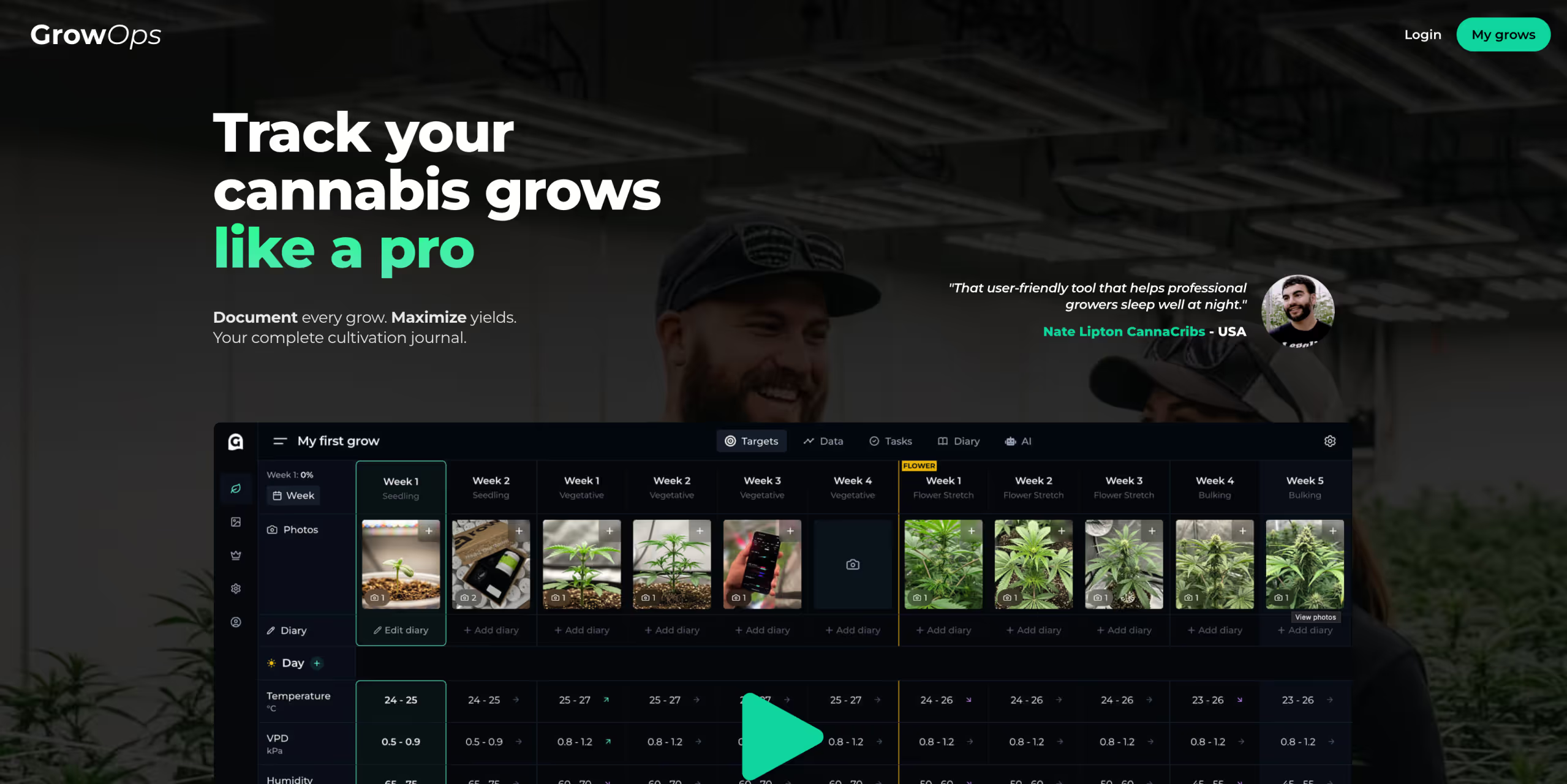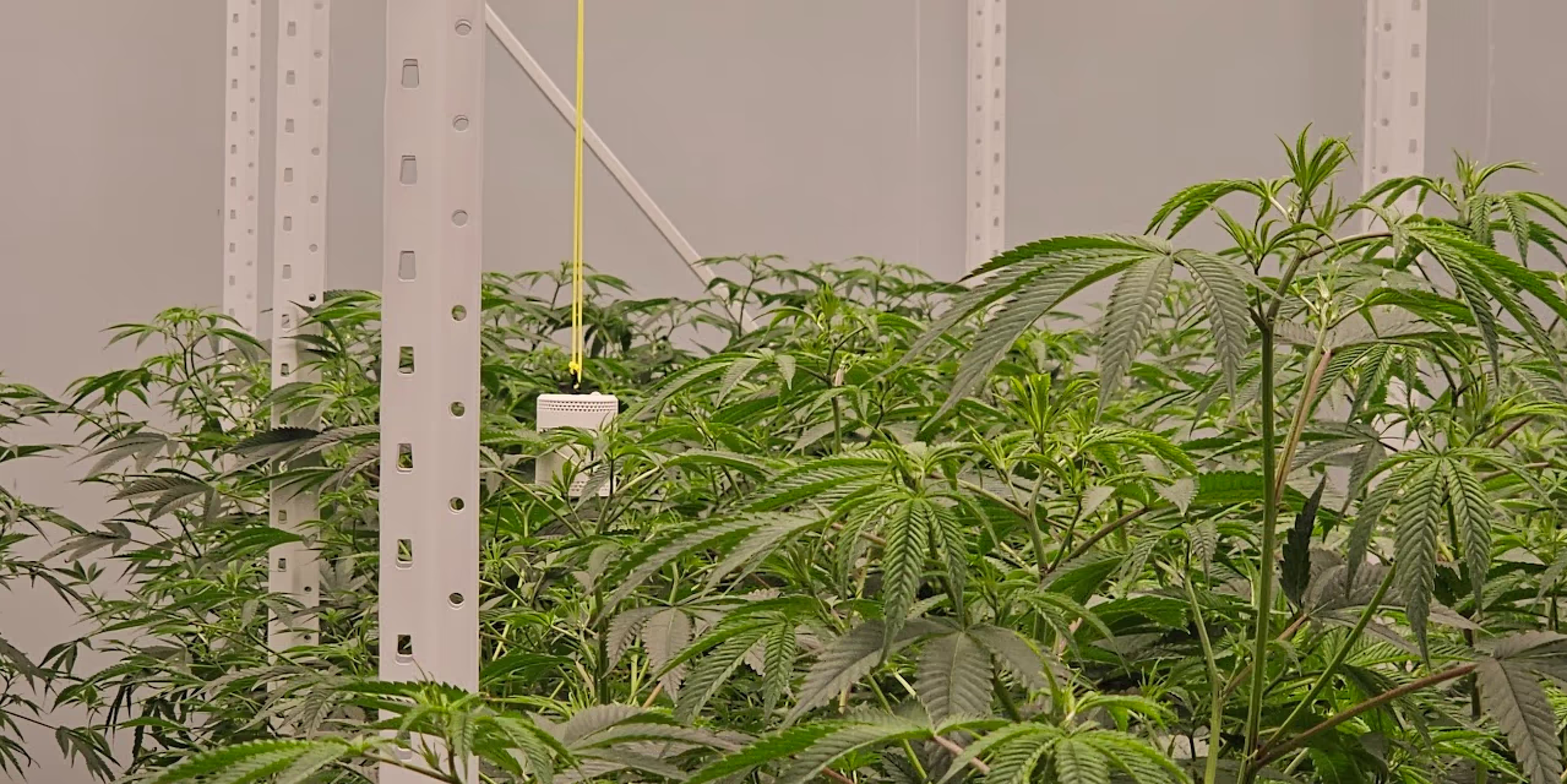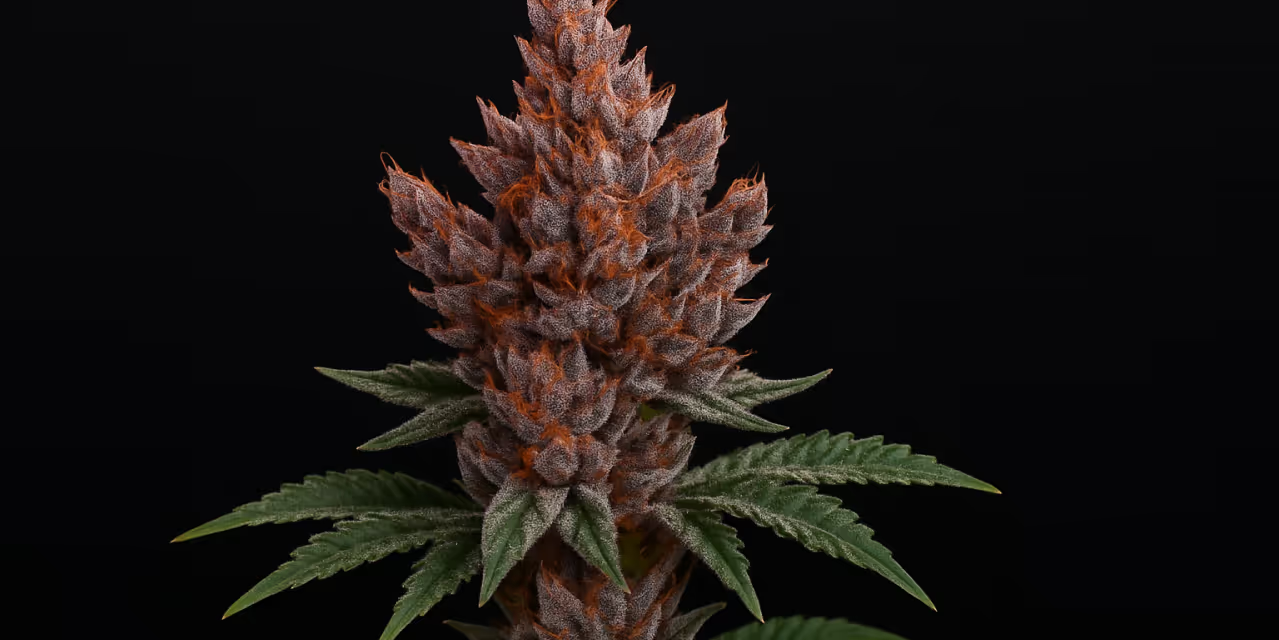How to build a Home Assistant grow room. (No DIY headaches)
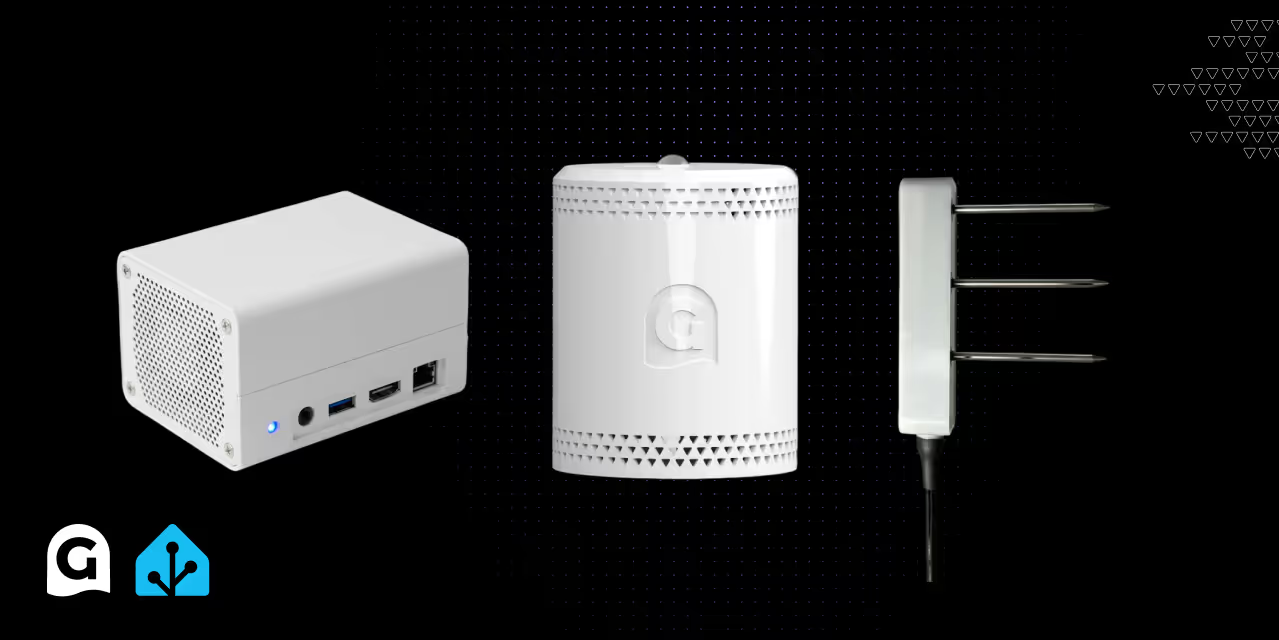
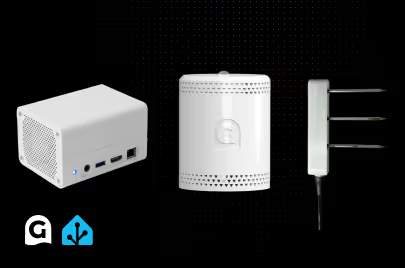
If you have been considering using a grow room Home Assistant set up in your grow space, you are likely in one of two camps.
Either you are already running Home Assistant and want to integrate your growing environment properly, or you are tired of overpriced, closed grow controllers and want something flexible, local, and under your control.
Home Assistant is perfect for that. The missing piece has always been good data.
That is exactly where Grow Sensor PRO fits in.
It is built for serious growers who want to use Home Assistant for growing plants without spending evenings building sensors from scratch.
You plug it in, point it at Home Assistant, and you suddenly have the kind of real time data you normally only see in lab-grade setups: leaf temperature, leaf VPD, CO₂, PPFD, DLI, substrate EC and more.
Accurate, calibrated, and ready to automate your next harvest.
Disclaimer: Any information given on this site is for educational purposes only. Please ensure if you’re growing indoors, you’re doing so in accordance with the law and subject to appropriate permissions and licenses of the applicable country.
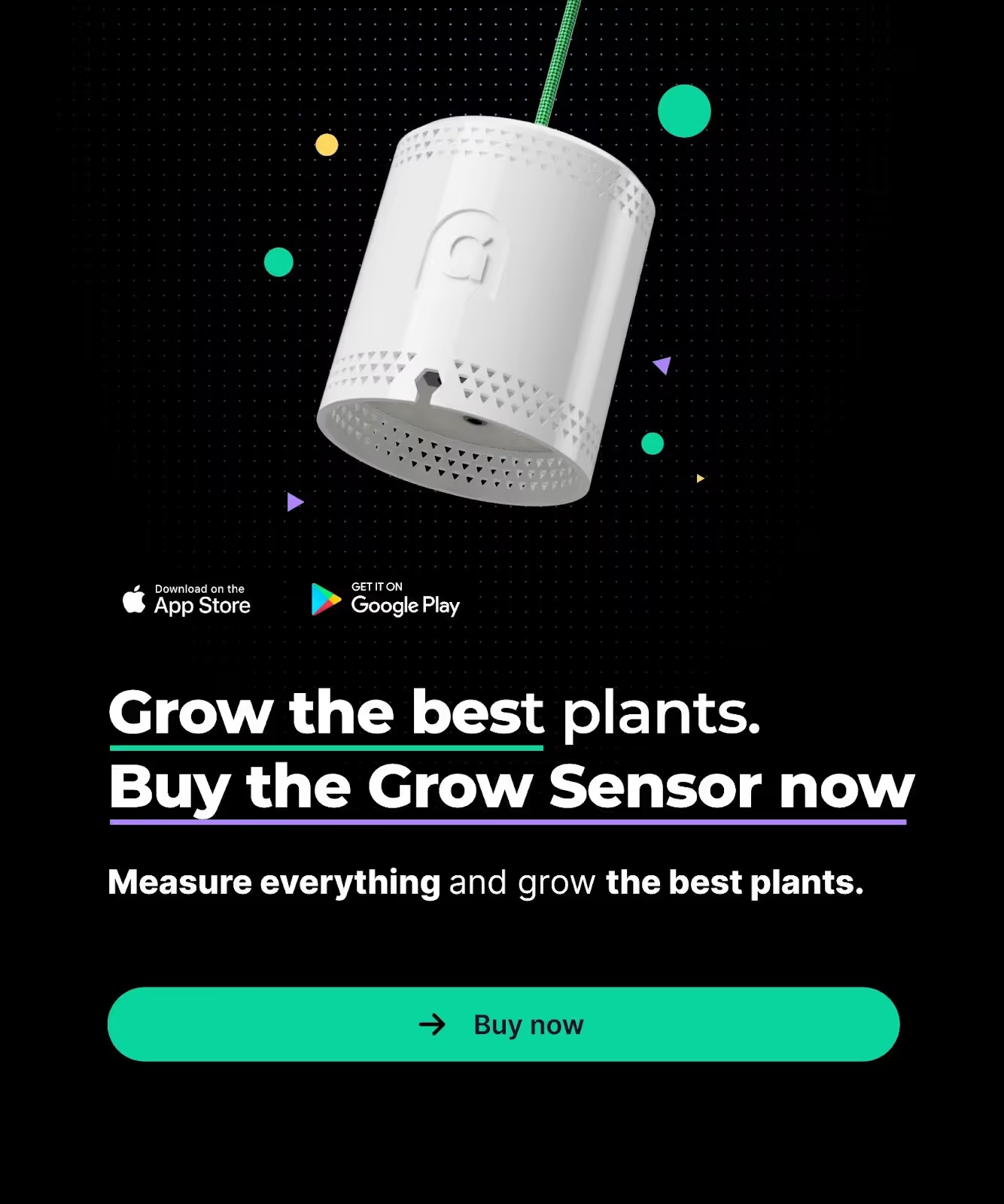
What Home Assistant actually is
Home Assistant is an open-source automation platform that runs locally on a Home Assistant server, or small computer like a Raspberry Pi, or even in a container.
In normal smart-home terms, people use it to connect their lights, plugs, thermostats, cameras and speakers and then build automations on top.
In a grow room, that translates to something much more interesting.
With a good sensor and a few controllable devices, Home Assistant can become the brain of your whole environment - a DIY grow room controller.
Home Assistant can automate grow rooms by flipping your grow lights on and off for veg and flower, dimming them if things get too hot, spinning the exhaust fan up and down, running heaters and dehumidifiers, and managing CO₂, all from one dashboard.
The point is not that home automation via Home Assistant is flashy.
The point is that it is open, it is local, and it gives you logic and visibility of other stuff that most smart grow controllers simply do not.
Why Home Assistant makes sense for indoor growing
Common plants grown indoors can be unforgiving when it comes to environmental requirements.
You can get away with “good enough” if you are just happy to pull a harvest, but if you want top shelf and repeatable results, you have to dial in the details.
Things like VPD (vapour pressure deficit), humidity, temperature and CO₂ are obvious.
Once you dig a bit deeper, you realise that leaf temperature and leaf VPD are even more important than room VPD, that PPFD and DLI tell you far more about your lighting than a simple wattage number, and that substrate moisture (VWC) and EC are essential for modern crop steering.
Home Assistant is perfect for this because it does not care what you connect to it.
If your lights, fans, heaters, CO₂ regulators, or pumps can be switched, dimmed, or controlled via a smart plug, relay, or integration, Home Assistant can orchestrate them.
It can ramp fan speed based on leaf VPD, dim an LED light when your canopy gets too hot, or send you a notification when your substrate gets too dry.
The catch is simple: the automations are only as good as the data you feed in.
This is the significant weakness of most grow room Home Assistant setups you see online.
People wire together a few cheap sensors, or buy devices with ±5% humidity accuracy, no calibration and poor drift control, and then wonder why their automations feel random.
That is the gap Grow Sensor PRO was designed to fill.
Grow Sensor PRO: Built with Home Assistant growers
Over the last five years, we have been working directly with Home Assistant growers to build a sensor that actually does what they need.
Not a toy. Not a locked-down beginner device.
A compact, calibrated, robust sensor that measures everything a modern, tech-savvy grower wants and plugs into Home Assistant in about five minutes.
We are growers ourselves, so the thinking has always been to build something we would actually trust in our own rooms.
Quality, usability and calibration sit at the top of the list.
Most sensor/control system products on the market take the opposite approach: they are closed, poorly made, limited in what they measure, and often designed more for marketing than plant physiology.
Making your own gear from scratch is fun. A lot of us have done that for years. But at some point, you want a device that just works.
You want to unpack it, hang it, connect it, and start using the data without wondering if the numbers are lying to you.
When you get a Grow Sensor PRO, that is what you get.
A member of our team fully calibrates the sensor before it leaves.
We support you through Home Assistant integration if you need a hand. And we actively listen to HA growers using the device to shape where the product goes next.
What the Grow Sensor PRO measures (and why it’s important)
The Grow Sensor PRO covers all the basic environmental metrics you would expect: temperature and humidity, VPD, CO₂ and pressure.
This alone would be enough to drive a decent DIY grow room Home Assistant setup, but the real value is in the extra layers.
On the canopy side, it measures leaf temperature with a dedicated IR sensor and then calculates leaf VPD and the difference between air and leaf temperature.
That gives you a much closer picture of what the plant is experiencing, rather than just what the room air is doing.
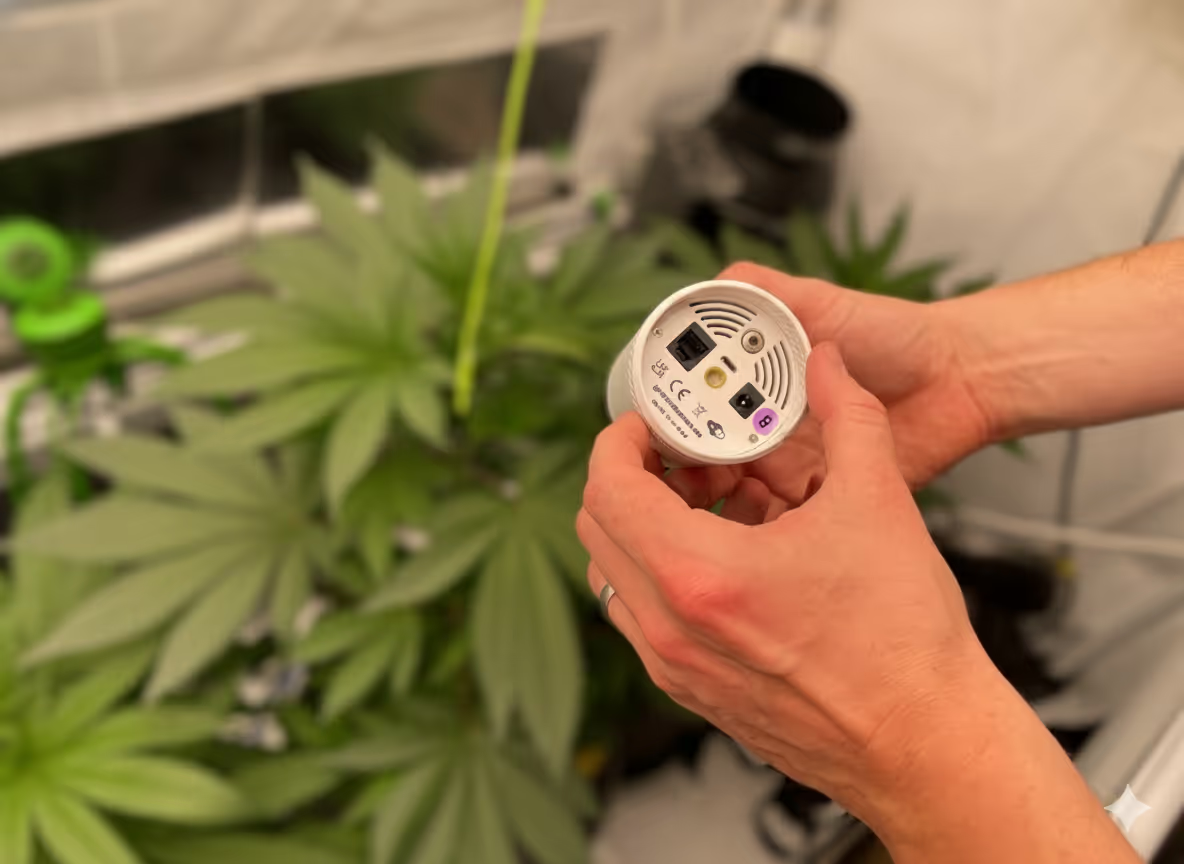
On the lighting side, it uses an extended-spectrum ePAR sensor covering 400–750 nm.
It measures PPFD and DLI, and breaks the light into blue, green, red, and near-infrared bands.
That means you can stop guessing and start actually knowing how much light hit your crop in the last 24 hours.
In the root zone, the sensor integrates substrate probes using SDI-12.
You can plug in devices like the Grow SubSense, Teros 10, 11, and 12, Terra Link, Aclima sensors, or the WET-150, and get VWC, EC, and substrate temperature streamed straight into Home Assistant next to your environmental data.

All of this is time-series data.
You can see it live, go back over previous days and use it in graphs, dashboards and automations.
You can also define your own high, low, danger high and danger low limits for each metric, then expose these set points as alerts or state changes in Home Assistant.
Accuracy and calibration
Under the hood, the sensor is built to be trusted.
Ambient temperature is measured from −9 to 58 °C with an accuracy of ±0.5 °C.
Humidity is measured from 10% to 95% with ±1.3% accuracy.
Leaf temperature is measured from −30 to 100 °C, again at ±0.5 °C accuracy.
CO₂ is measured from 400 to 5000 ppm with ±40 ppm plus 5% accuracy.
DLI comes in at around ±3% accuracy.
The spectral sensor covers from 380 to 910 nm.
The Grow Sensor ePPFD calculations over the 400–750 nm band and dedicated bands for blue, green, red and near-IR.
Wavelength accuracy is typically around ±2 nm.
In real terms, it means the numbers you see on the screen match what is happening in your tent or room, in a way that cheaper, uncalibrated devices just can’t deliver.
This is important for Home Assistant because when you base automations on data, every bit of error gets baked into your logic.
If your humidity sensor is three or four percent off, your VPD is off.
If your light sensor is 15–20% out, your DLI targets are unreliable.
When you are about to let Home Assistant dim your lights or ramp your AC based on those values, that matters.
Hardware design and flexibility
Physically, the Grow Sensor PRO is compact and built to withstand real growing conditions.
The PAR sensor sits on the top with a diffuser shaped to capture not just direct light but also the light that bounces around inside a tent.
The case is designed to shed radiant heat from grow lights, rather than soak it up and skew readings.
You can hang it at the canopy using the included hanging kit and adjust the height as your plants grow.
There is also a tripod mount on the bottom if you prefer to stand it.
Inside, there is a large battery, and you can adjust how often it takes readings to suit how fine-grained you want your data.
It charges by USB, can be run continuously powered, and can even be run off a small solar panel in a greenhouse.
At the bottom of the device, you’ll find ports, including the RJ12 connector, which connects to an RJ12-to-SDI-12 adapter.
That is how you can plug multiple SDI-12 devices directly into the sensor without needing an extra controller or hub.
The aim is to make the Grow Sensor PRO the central brain of your Home Assistant grow, both in terms of environmental sensing and root-zone sensing.
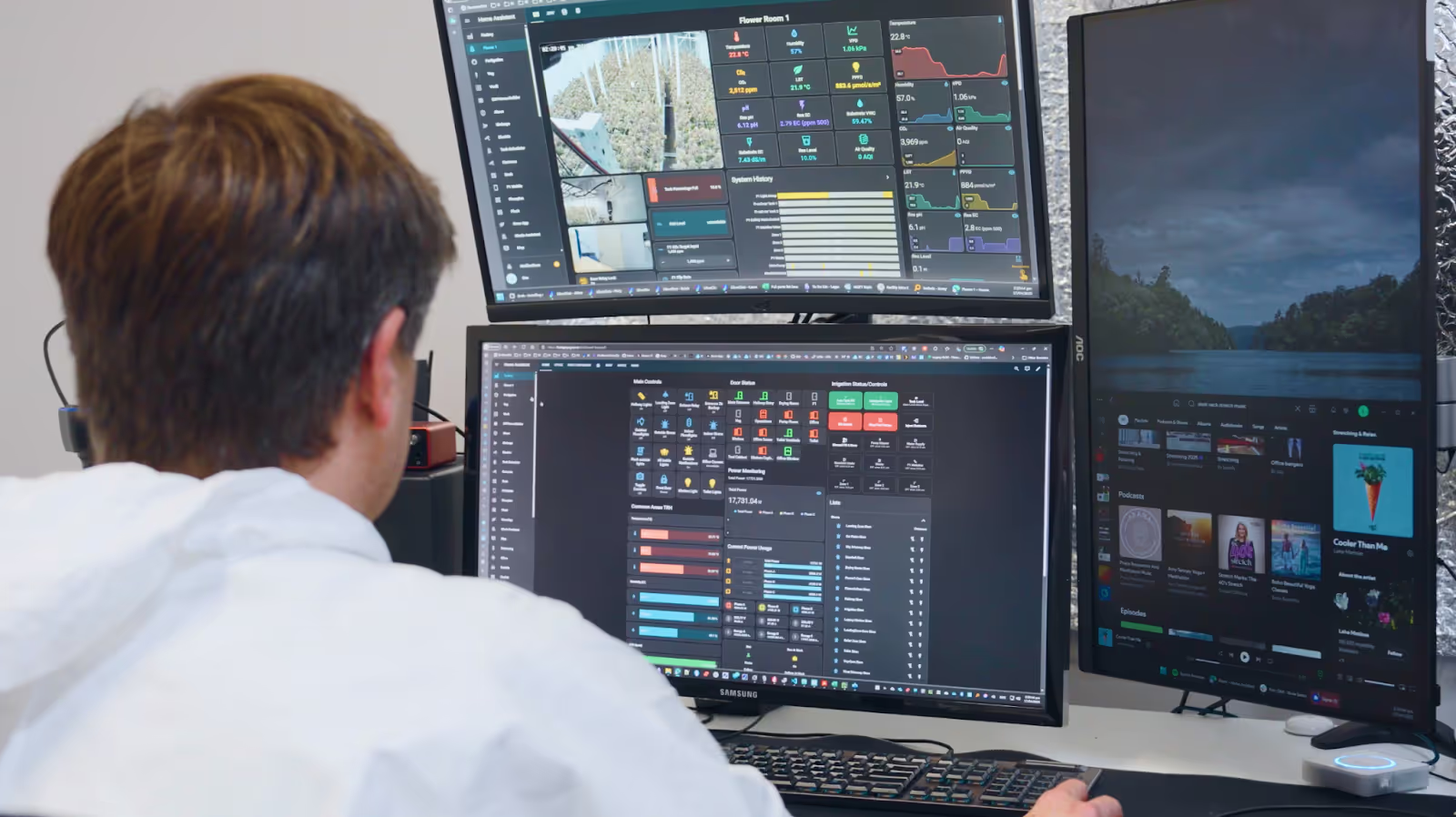
How Grow Sensor PRO talks to Home Assistant
The integration is straightforward and built on standard Home Assistant tools.
Here’s the full guide to set up your Home Assistant with the Grow Sensor PRO
Home Assistant runs an MQTT broker, typically using the Mosquitto add-on.
You point the Grow Sensor PRO at that broker using the Grow Sensor app, give it the broker address and credentials, and the sensor starts publishing JSON messages under a topic like GROW/GROW-00070006.
In Home Assistant, you add the MQTT integration, and you can immediately listen to that topic to see the data coming in.
From there, you have two main options.
One is to publish MQTT discovery messages so that Home Assistant automatically creates sensor entities for each metric using the topic and a simple JSON template.
The other is to edit your configuration.yaml and define the sensors manually, mapping fields like r1val and r2val to named sensors, for example, “70006 Temperature” with a state topic of GROW/GROW-00070006 and a simple value template.
Either way, within a few minutes, you can open your Home Assistant dashboard and see air temperature, RH, VPD, leaf temperature, leaf VPD, PPFD, DLI, CO₂, VWC, and EC streaming in.
From there, you can build charts, cards and automations the same way you would for any other Home Assistant device.
Tip (for makers): ESPHome is an open-source tool for loading custom firmware onto ESP devices and defining components (sensors, switches, lights) for Home Assistant.
Turning data into control: Lights, HVAC, CO₂ and irrigation
Once Grow Sensor PRO is feeding data into HA, it becomes much easier to build a Home Assistant grow room that does something meaningful rather than just showing numbers.
Lighting is a simple place to start.
Instead of running a timer that just flips your grow lights on and off for veg and flower, you can use PPFD and DLI to target the amount of light the plant actually receives.
You can build a DIY grow room light controller/automation that dims your lights when leaf temperature goes above a threshold, as an extra safety net if your AC struggles.
You can even change the spectrum if your lights support it and you want to play with different red and blue balances at different stages of plant growth.
On the HVAC side, you can move away from simple room-VPD based control and instead use leaf VPD.
Fans, ACs, heaters, humidifiers, and dehumidifiers can all be tied to that signal, creating your own DIY grow room temp controller.
When leaf VPD drifts out of range, Home Assistant makes small adjustments and keeps the grow room temperature at the canopy in the sweet spot.
You can also run smarter CO₂ logic, enriching during lights-on and dropping back to a lower baseline or turning off at night, all based on CO₂ levels and light status.
In the root zone, substrate VWC and EC let you steer irrigation.
You can trigger small, frequent watering to maintain a particular moisture band, or deliberately let VWC drop before a larger feed.
EC gives you feedback on how strong your feed is and how the root zone is responding.
All of these can be tied into Home Assistant automations so that crop steering becomes a data-driven process instead of guesswork.
The point is that Grow Sensor PRO provides Home Assistant with the information it needs to run a grow room properly. A complete grow room controller.
You are no longer automating from a single cheap temp and humidity sensor in the corner.
You are automating from a suite of lab-grade measurements that actually reflect plant reality.
A simple Home Assistant grow room setup
If you want a mental picture of how this looks, imagine a simple Home Assistant grow tent set up.
You hang the Grow Sensor PRO slightly above canopy height and connect it to your Wi-Fi.
Home Assistant is running on a Raspberry Pi on your network.
The sensor connects to the MQTT broker, and your Home Assistant dashboard now shows VPD, leaf VPD, leaf temperature, CO₂, DLI, PPFD and substrate data from a Teros or SubSense probe.
Your grow lights are plugged into smart plugs or controlled by a dimmable driver that Home Assistant can see.
Your extraction fan is controlled by a smart fan controller or relay.
Your heater, humidifier and dehumidifier are on smart switches/smart outlets.
You might have a CO₂ regulator on a relay and a pump for irrigation.
Now you build a handful of simple automations:
- Lights flip on and off for veg and flower
- Fans and dehumidifiers track leaf VPD
- Lights dim if leaf temperature gets too high
- Your CO₂ switches off at night
- And the pump gives a small irrigation when VWC drops under a setpoint
That is a Home Assistant DIY grow room control kit in practice: local, flexible and driven by decent data.
Who the Grow Sensor PRO is for
This is not a toy. It is not priced or specced like a basic beginner gadget, and if you’re just starting out and have not grown a couple of runs yet, it might be more than you need.
Where the Grow Sensor PRO really makes sense is when you are serious about your crop.
If you are a hobby grower who wants professional-level insight, a small facility with a couple of rooms, a commercial grow looking for reliable monitoring, or a tech-forward grower who has already dabbled with Home Assistant and DIY sensors, this is exactly who we built it for.
Most growers who go down this route end up seeing both a jump in yield and in quality.
It is common to see at least a 30% improvement in overall performance once environment, light, and irrigation are no longer drifting all over the place, and terpene expression tends to follow when the environment is consistent.
What growers are saying
One grower in Germany, who goes by “lEtz gRoW cRiZz”, summed it up nicely:
“I rarely write reviews. But I am really impressed. When I found the sensor on YouTube, I was immediately excited. Small, smart and all the important data at a glance. I’ve been disappointed by many devices in recent years, but this device is very accurate. It was just as easy as promised. Unpack – switch on – connect – be happy. Thanks to the sensor, I've already been able to change many things (such as lower CO2 at night), which has SIGNIFICANTLY improved the growth of my plants. I love the device, the app is super intuitive and clearly designed, and all data is available anytime, anywhere. Everything else I've looked at is much more expensive or not accurate enough, and many users are disappointed (Trolmaster, Pulse, AC Infinity, Mars Hydro, Spider Farmer, Grow Control, and many more). Here you can really see that it's by growers for growers.”
Another, from Legacy AG in New Zealand, had been DIY-ing sensors for years:
“Imagine if you could design the ultimate all-in-one sensor for your grow room or tent - intuitive, comprehensive, and free from annoying hubs and subscriptions just to use the thing (looking at you Aroya). Growsensor has nailed it. Crafted by genuine growers for growers, this device ends the frustrating hunt for a reliable monitoring solution. I’ve spent years DIY-ing multiple sensors because the market offerings just didn’t cut it. Not anymore. Integration with Home Assistant is seamless. It monitors everything I need, including live leaf temperature and leaf VPD, PPFD and CO₂. I’ll be equipping every room and tent with this solution.”
These are just two examples, but they show the pattern: people who already live in the Home Assistant world, who have tried other options and who want a “no BS” device that can become the core of their automation.

Pricing, shipping and data ownership
At the time of writing (Nov 2025), the Grow Sensor PRO is available at a sale price of £399, down from the usual higher price.
We are a UK-based company, and we ship for free within the UK.
We currently ship to most of the EU, the US, Canada, New Zealand and Australia, with some restrictions based on manufacturing and logistics.
The Grow Sensor app is free, and your data is yours.
We do not charge a subscription fee for the privilege of seeing your own numbers. Most of our competitors do, and we simply do not agree with that approach.
If you are on the fence, it is worth comparing the total package to buying individual lab-grade sensors for CO₂, PAR/DLI, temperature/humidity and substrate, then trying to integrate them with Home Assistant yourself.
The cost adds up very quickly, and you still have to do the work.
With Grow Sensor PRO, that work is done. And if you are not totally happy, we offer a money-back guarantee.
What comes in the box, and what’s next
When you order, you get the Grow Sensor PRO itself, the hanging cable system, an SDI-12 connector block and a USB power and charging cable.
If you also pick up a SubSense substrate probe, we pre-wire that for you and ship it in the same box, so you are ready to plug it in.
On the development side, we’re working on tighter integration with our grow diary platform, Grow-Ops.io, so you have the ability to link environment and irrigation data with crop notes and photos.
We are also building more sensor options that plug directly into the Grow Sensor, including an inexpensive relay and sensor box to expand climate control systems, and an EC and pH probe set for hydro and DWC.
We are very open to feedback, especially from Home Assistant growers.
If there is a metric, feature or integration you want in future, tell us. We move fast, and we like building this in partnership with the community actually using it.
Is Grow Sensor PRO worth it?
The short answer is yes.
The longer answer is still yes, but with a bit more context.
If you add up what it would cost to buy all the equivalent lab-grade sensors separately, calibrate them, and then integrate them with Home Assistant yourself to monitor and control your space, it’s not cheap.
If you try the DIY route with modules and boards, you can certainly get something working, but you will burn a lot of time, and it is unlikely to achieve the stability and calibration of a dedicated unit.
Grow Sensor PRO condenses that into a single device you can trust to actually automate from.
Combined with the Grow Sensor app, which is designed to be fast and genuinely useful rather than pretty but shallow, it becomes a central part of a serious Home Assistant indoor garden.
If you want to see the numbers for your situation, we have an ROI calculator and a bunch of reviews you can go through.
The proof is always in the plants, so we are comfortable offering a full money-back guarantee if you are not happy.
And if you have questions, reach out. We’d love to hear from you!
We are particularly keen to work closely with people who want to push Home Assistant for indoor growing, because that is where most of the interesting work happens.








.avif)
